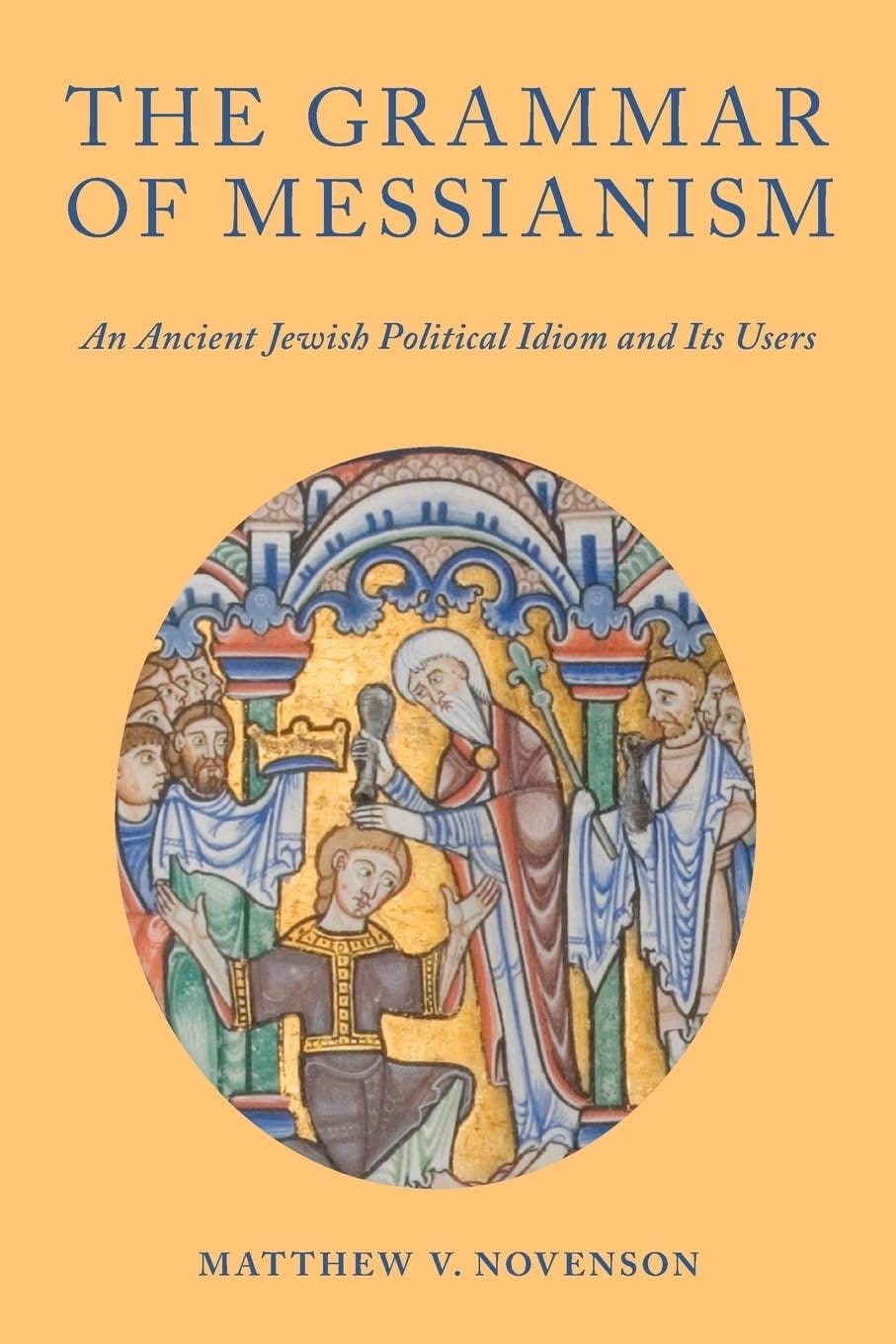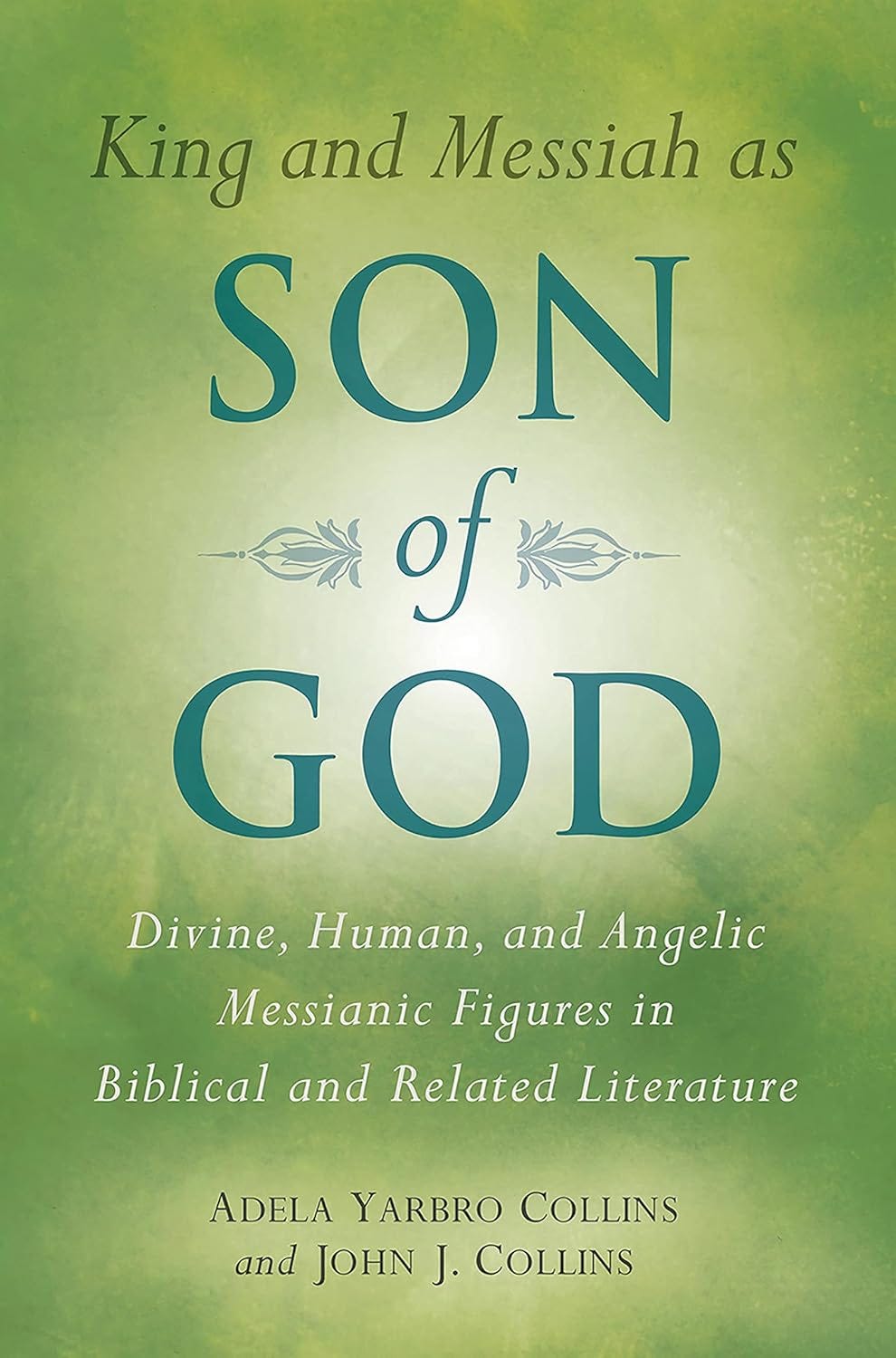The Grammar of Messianism (Matthew V. Novenson)
An Engaging Scripture Book Review Series: PART I: Introduction
A Book Review Series: Introducing Novenson and His Book
I am currently teaching a doctoral seminar for Northern Seminary on the topic of early Judaism, and the students were eager to read a book by Matthew Novenson. We chose this book. For those of you who are unfamiliar with Novenson, he is an extremely talented and well-regarded mid-career scholar, now at Princeton Seminary (his alma mater), but for many years he was at Edinburgh. I have had several interactions with Novenson, and he is a consummate gentleman scholar, but don’t let his kind and friendly demeanor fool you—he is an incisive scholar!
He made a name for himself with his outstanding first monograph, Christ Among the Messiahs (still my favorite Novenson book). He kindly endorsed my book Paul and the Language of Faith and later on invited me to write for the Oxford Handbook on Pauline Studies on the topic of the pistis Christou debate. Novenson has also participated in the group I co-chair at SBL/IBR on Pauline theology. He has been a long-time attendee and supporter of our group, for which I am very grateful. I consider him a friend.
Novenson is a “New Testament scholar,” but similar to people like John Barclay, Novenson is very at home in the scholarship of early Judaism, as this book makes clear.
The Grammar of Messianism: An Ancient Jewish Political Idiom and Its Users (Oxford University Press 2017) is an incisive contribution to the study of ancient Jewish “messianism,” offering numerous correctives to long-standing assumptions and old consensus views about the messianic idea. Here is the official description:
Messianism is one of the great themes in intellectual history. But because it has done so much important ideological work for the people who have written about it, the historical roots of the discourse have been obscured from view. What did it mean to talk about "messiahs" in the ancient world, before the idea of messianism became a philosophical juggernaut, dictating the terms for all subsequent discussion of the topic? In this book, Matthew V. Novenson offers a revisionist account of messianism in antiquity. He shows that, for the ancient Jews and Christians who used the term, a messiah was not an article of faith but a manner of speaking. It was a scriptural figure of speech, one among numerous others, useful for thinking about kinds of political order: present or future, real or ideal, monarchic or theocratic, dynastic or charismatic, and other variations besides. The early Christians famously seized upon the title "messiah" (in Greek, "Christ") for their founding hero and molded the sense of the term in certain ways; but, Novenson shows, this is just what all ancient messiah texts do, each in its own way. If we hope to understand the ancient texts about messiahs (from Deutero-Isaiah to the Parables of Enoch, from the Qumran Community Rule to the Gospel of John, from the Pseudo-Clementines to Sefer Zerubbabel), we must learn to think not in terms of a world-historical idea but of a language game, of so many creative reuses of an archaic Israelite idiom. In The Grammar of Messianism, Novenson demonstrates the possibility and the benefit of thinking of messianism in this way.
Whenever I am interested in a book, I tend to turn to the Table of Contents to get a sense for the flow of the book. Below is the TOC, but it is not exactly intuitive how these chapters relate to one another and how they contribute to a key thesis or idea—we’ll get into that later in this review series.
1. After the Messianic Idea
2. Oil and Power in Ancient Israel
3. Messiahs Born and Made
4. Messiahs Present and Absent
5. The Quest for the First Messiah
6. The Jewish Messiah-Christian Messiah Distinction
7. The Fate of Messiah Christology in Early Christianity
8. The Grammar of Messianism
Let me say what this book is not. It is not a book that introduces or surveys ancient Jewish messianic thought. It is not a textbook ($140 hardcover!), and it is not for beginners. It is a scholarly work for scholars and advanced students. It assumes a lot about what the reader already knows, things like Greek, Hebrews, Aramaic, German, and a good grasp of the history of scholarship on Jewish messianism.
If you want to dip your toes into the scholarship at a ground level, I recommend Fitzmyer, and then Collins and Collins.
Novenson’s book is a critical response to scholarship on early Jewish messianism, so readers should know it presumes high competence in the subject. Novenson believes that a number of missteps in the field has led to a quagmire that has made the subject too difficult to navigate. Scholars choose texts to include (or exclude) hastily or haphazardly. Scholars make assumptions about the New Testament’s messianic portrayal of Jesus that need not be made. Scholars over-generalize the differences between a “Jewish messiah” and the “Christian messiah” when we look at the full details of ancient evidence.
At its most basic, Novenson’s book is a plea to let the primary evidence speak for itself, rather than picking and choosing information that can fit some neat mold that all of a sudden “makes sense” of “the way Jews thought” or “the way Christians thought” about the messiah.
In the remaining posts in this series will do the following:
Summarize the book (with some comments), chapter by chapter
Present my key takeaways and strengths of the book
Offer some weaknesses or disappointments
In case you are dying to know, here is my quicktake:
Anything Novenson thinks and writes about is going to have gold in it, and this book is proof positive. My doctoral students were impressed and learned a lot from it; so did I—no doubt. I do think the way the book is designed and edited hurts its messaging and utility. It felt to me like a set of critical essays on a topic with only a loose thesis concept. By the end a thesis emerges a bit more clearly, but the reader, I would say, has to really work for it. Of course, scholars will greatly appreciate the little details, the insightful footnotes, the beautiful turns of phrases, but the book could have been more user-friendly, reached an even broader audience, and could have made an even stronger contribution to scholarship with more editorial input on how to frame the work, how to set up the reader in the introduction, how to tie the chapters together, and perhaps even what to leave out.
Stay tuned for more!
Please subscribe to make sure you get all the future posts in the series direct to your email.
If you think other folks would be interested in this series, please share.





Perhaps the editors were in over their heads? : )
Sounds really fascinating. I will enjoy following along. Thanks for guiding us through!